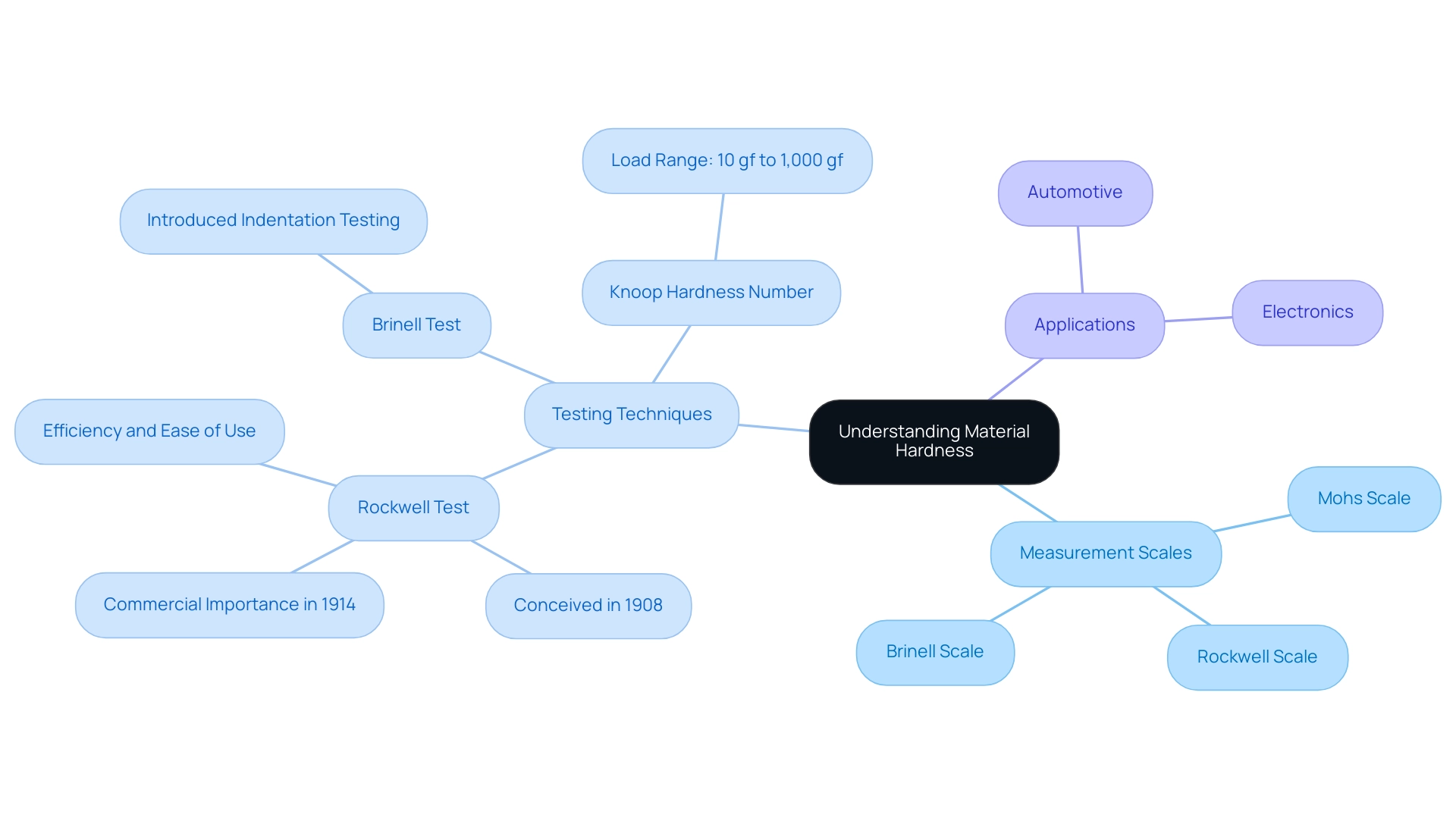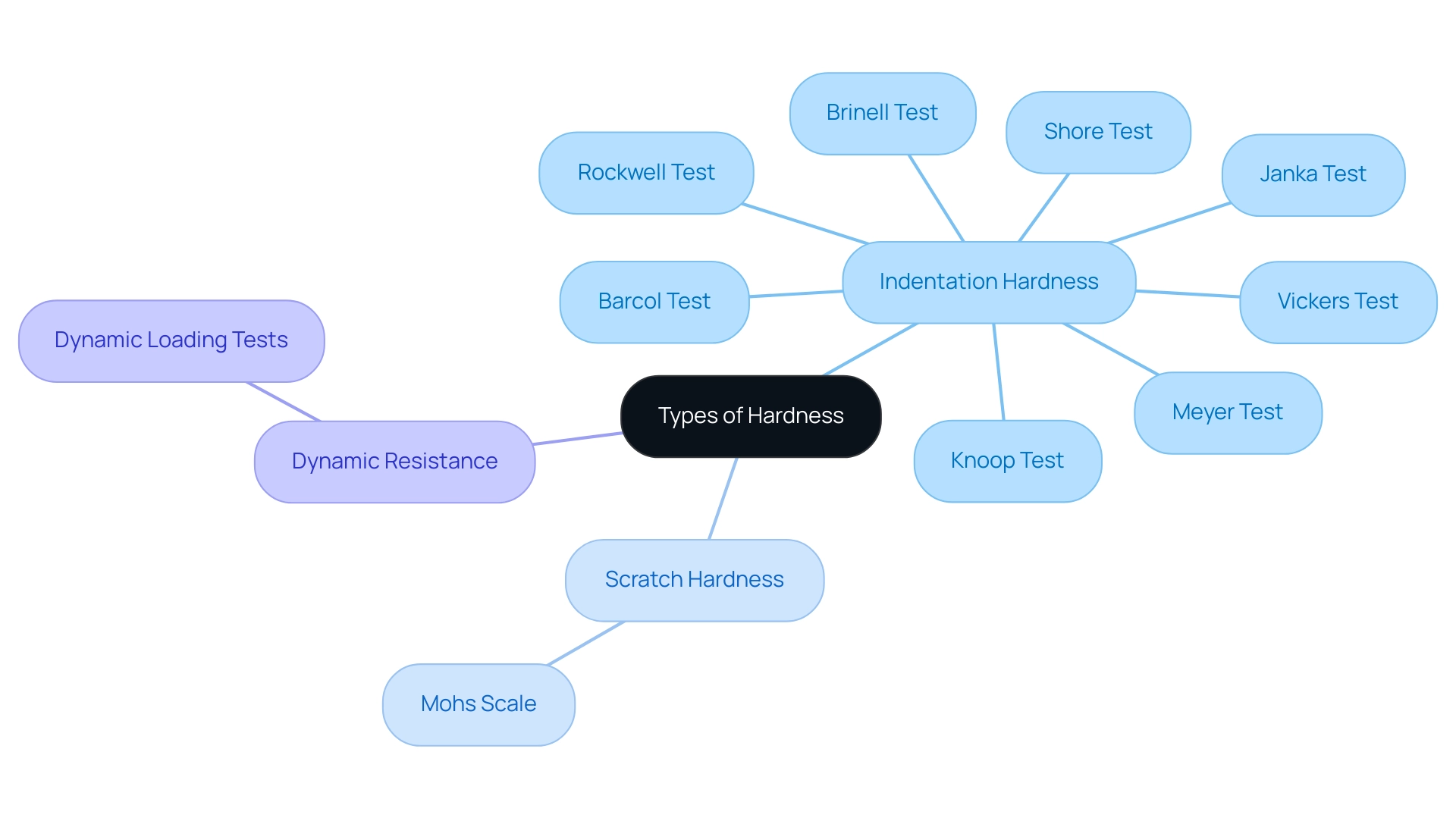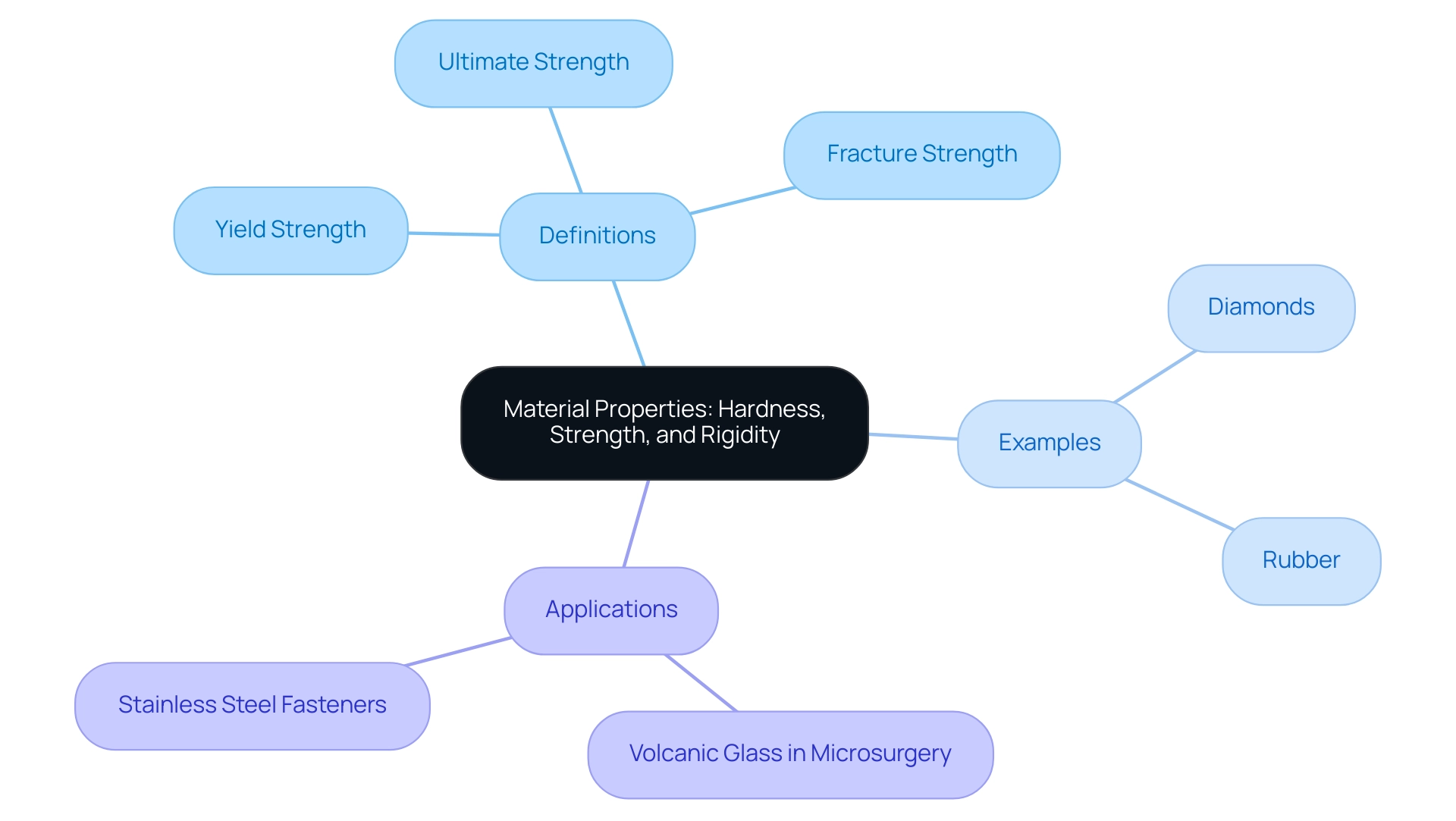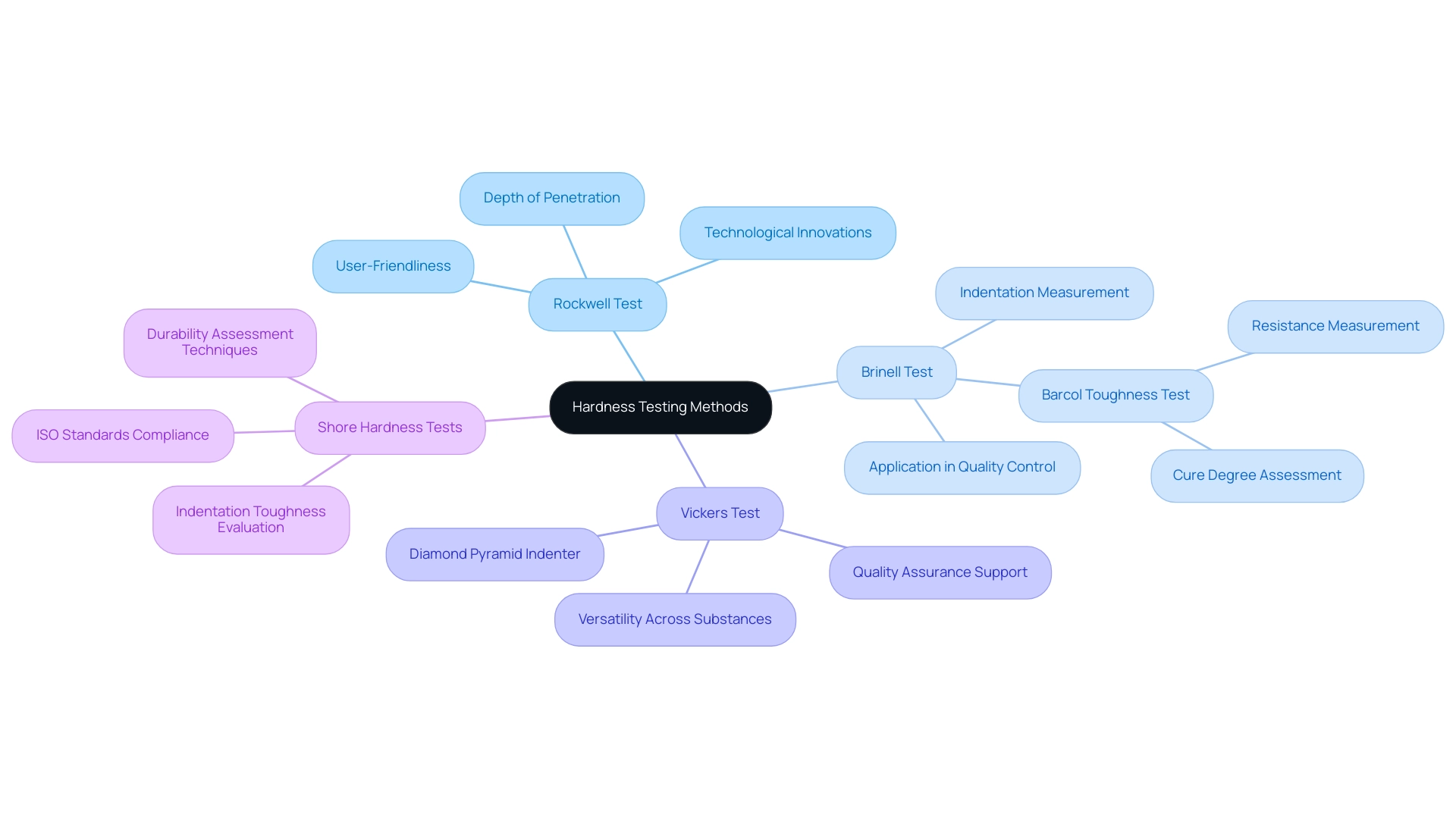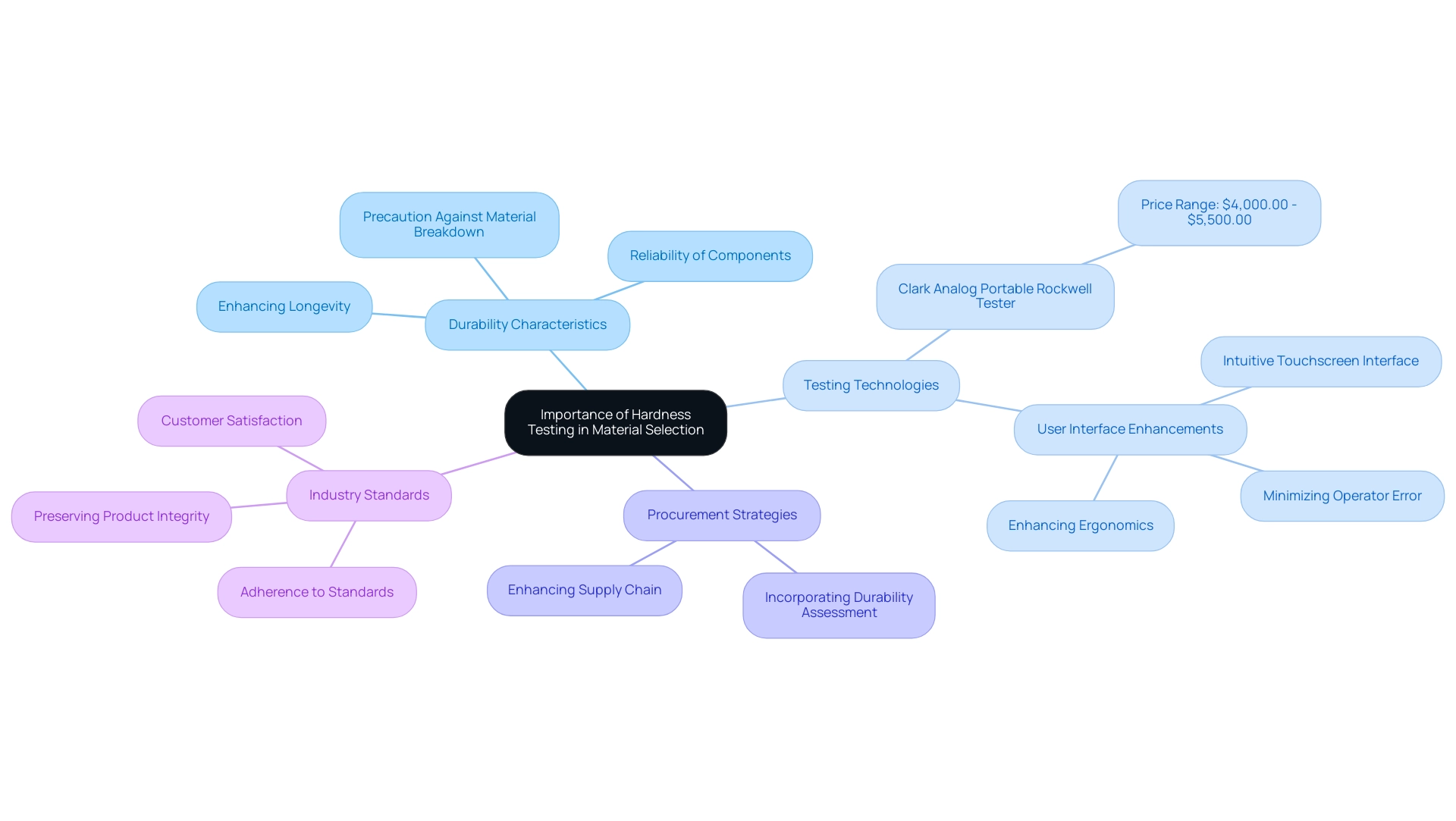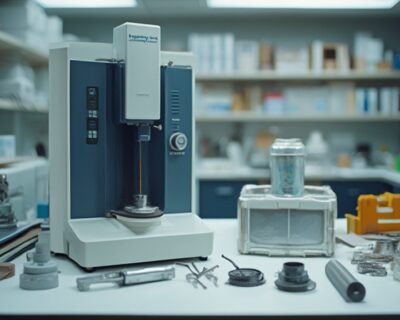Blogs

What Is Hardness of a Material? A Comprehensive Overview
Introduction
In the realm of material science, hardness serves as a fundamental metric that determines a material’s ability to resist deformation and wear, acting as a crucial indicator of durability across various applications. From the automotive sector to electronics, the significance of understanding material hardness cannot be overstated, as it directly influences product reliability and performance.
This article delves into the intricacies of hardness measurement, exploring different testing methods and their respective applications, while elucidating the interplay between hardness, strength, and rigidity.
By examining the various types of hardness, procurement professionals can make informed decisions that align material properties with specific operational demands, ultimately optimizing both product longevity and operational efficiency.
Defining Material Hardness: An Overview
Substance rigidity quantifies a substance’s resistance to localized plastic deformation, such as scratches and dents, making it a key indicator of durability and longevity. It demonstrates how effectively substances can withstand wear and tear, especially in challenging contexts. To understand what is hardness of a material, it is measured using various scales, including the Mohs scale for minerals and the Rockwell and Brinell scales for metals.
Significantly, the Rockwell toughness assessment is documented in 0.002 mm units, offering accurate insights into substance characteristics. The choice of durability assessment techniques depends on the particular substance category and the anticipated toughness levels, ensuring that suitable evaluations are utilized for each application.
J. A. Brinell wisely observed,
The Brinell test fundamentally initiated the production stage of indentation durability assessment and paved the path for further indentation evaluations that were more pertinent to types of substances.
This advancement in evaluation techniques is essential, particularly in sectors like automotive and electronics, where performance of substances is crucial. For instance, the Rockwell indentation test, conceived in 1908, gained commercial importance around 1914 due to its efficiency and ease of use, requiring no calculations for readings.
Furthermore, Knoop Hardness Number (HK) tests can be conducted with loads varying from 10 gf to 1,000 gf for detailed toughness analysis. Grasping the subtleties of durability testing not only assists in substance selection but also improves product dependability and effectiveness in practical uses, which is closely related to understanding what is hardness of a material.
Types of Hardness: Understanding Indentation, Scratch, and Dynamic Hardness
Understanding what is hardness of a material is crucial for choosing substances that satisfy particular usage criteria. The primary categories include:
Indentation Hardness: This is quantified by applying a predetermined load to a substance and measuring the resulting indentation. Commonly employed tests encompass the Rockwell and Brinell methods, which serve various types and applications. For example, macroindentation tests, which involve loads of 1 kgf or more and include methods such as Vickers, Brinell, Knoop, Janka, Meyer, Rockwell, Shore, and Barcol tests, provide valuable insights into substance characteristics. It’s important to note that while these tests provide useful data, no simple correlation exists between results from different hardness tests. Practical conversion tables exist for certain substances, aiding in interpretation. The depth of the Knoop impression is about 1/30 of the length, highlighting the precision involved in these measurements. As Yutai Katoh observes in his study on the characteristics of zirconium carbide for nuclear fuel uses, comprehending these traits is essential in choosing appropriate substances for particular environments.
Scratch Hardness: This category evaluates a substance’s resistance to scratching, illustrated by the Mohs scale, which ranks minerals according to their capacity to scratch each other. This evaluation is crucial for scenarios where surface integrity is paramount. Expert insights emphasize the significance of comprehending scratch resistance in choosing substances, especially in settings vulnerable to wear.
Dynamic Resistance: This type is assessed under dynamic loading situations, vital for substances exposed to impact or vibrations. It illustrates a substance’s performance in practical uses, where static measurements may not offer a complete view. As sectors progress, the assessment of dynamic resilience becomes progressively pertinent, ensuring substances can endure operational pressures.
Understanding what is hardness of a material allows purchasing experts to make knowledgeable choices that align substance characteristics with intended application, ultimately enhancing performance and durability.
The Interplay Between Hardness, Strength, and Rigidity
Understanding what is hardness of a material is crucial as it relates to the interrelationship between hardness, strength, and rigidity in engineering applications. What is hardness of a material quantifies its resistance to deformation, whereas strength defines its capability to endure applied loads without failure. Key definitions include:
- Yield strength: describes the maximum tensile stress before permanent deformation.
- Ultimate strength: the maximum stress an object can withstand.
- Fracture strength: the stress at which an object fails.
Rigidity complements these properties by measuring the extent to which an object deforms under stress. As Humberto Villasenor, a Senior Mechanical Engineer with extensive experience, notes,
Understanding the nuances between these characteristics is essential for effective selection of resources.
It’s essential to understand that a tough substance is not always equivalent to strength; for example, although diamonds display remarkable durability, they can also be fragile, restricting their use in situations where impact resistance is vital.
On the other hand, substances such as rubber, which show considerable energy absorption and flexibility, may lack durability yet offer essential strength in dynamic environments. The case study titled ‘Material Selection: Strength, Rigidity, and Hardness’ exemplifies these trade-offs, illustrating how volcanic glass, though brittle, serves effectively in microsurgery due to its unique properties. Furthermore, recent news emphasizes the advantages of utilizing stainless steel fasteners in coastal building, highlighting the significance of performance in particular uses.
Thus, procurement managers and engineers must thoughtfully balance these characteristics, including what is hardness of a material, to enhance the performance of the substance for their particular uses, reflecting the subtle interaction of toughness, strength, and rigidity. Additionally, considering logistics, standard shipping to the Rest of the World takes 3 days at $31.95 per kg, which is relevant for procurement decisions.
Hardness Testing Methods: Techniques and Applications
A variety of methods are utilized to assess the hardness of substances, each tailored to specific applications within various industries:
- Rockwell Test: This method evaluates the hardness by measuring the depth of penetration under a major load compared to the penetration from a preliminary load. Its efficiency and user-friendly nature make it a preferred choice for many industries. Stanley Rockwell, who started commercial production of Rockwell testers in partnership with Charles H. Wilson, played a pivotal role in the development of this assessment method. In recent updates to Rockwell testing methods, innovations have further improved accuracy and ease of use, reflecting ongoing advancements in testing technologies.
- Brinell Test: This test involves pressing a hardened steel ball into the surface of the substance and measuring the resulting indentation diameter. It is especially beneficial for substances with coarse or uneven structures, making it an essential tool in quality control and assessment. The Barcol toughness test, a variation, measures the resistance of a substance to penetration by a sharp steel point under spring load, providing immediate insight into the readiness of the substance for application. It is often used to gauge the degree of cure in plastics, enhancing its practical relevance.
- Vickers Test: Utilizing a diamond pyramid indenter, the Vickers test is suitable for a diverse array of substances and provides a continuous scale of resistance. Its versatility enables thorough evaluation across various types, supporting stringent quality assurance processes.
- Shore Hardness Tests: These tests are performed to evaluate indentation toughness of substances, adhering to ISO standards, further expanding the techniques available for assessing substance durability. These durability assessment techniques are essential in quality control, particularly for understanding what is hardness of a material, ensuring that substances conform to the required specifications for their intended uses. With the maximum tribological wear measurement reaching 575.56, the accuracy of these tests is crucial for performance reliability in practical use.
The Importance of Hardness Testing in Material Selection
Understanding what is hardness of a material is crucial in the evaluation and selection process of substances, particularly in the automotive sector, where the choice of components directly influences durability and performance. By identifying the appropriate durability characteristics, manufacturers can enhance the longevity and reliability of components, especially those subjected to significant wear and tear. Additionally, thorough durability assessment acts as a vital precautionary step against expensive material breakdowns by confirming that chosen substances can endure particular operational conditions.
Incorporating durability assessment into procurement strategies not only enhances the supply chain but also guarantees adherence to industry standards, which is crucial for preserving product integrity and customer satisfaction. The investment in durability assessment technology, such as the Clark Analog Portable Rockwell Tester, which ranges in price from $4,000.00 to $5,500.00, emphasizes its importance in the industry. The evolution of assessment technology, highlighted by Stanley Rockwell’s collaboration with Charles H. Wilson in the commercial production of Rockwell testers, has further streamlined the evaluation process, minimizing operator error and enhancing ergonomics.
This contemporary method, illustrated by the user interface enhancements in material evaluation, facilitates swift analysis in high-volume production settings, ultimately resulting in enhanced measurement dependability and operational effectiveness. As noted by industry leaders, knowing what is hardness of a material and strategically implementing hardness testing in material selection is crucial for achieving superior product performance and competitive advantage in the marketplace.
Conclusion
Understanding material hardness is vital for ensuring the durability and performance of products across various industries. The article highlights the significance of different hardness testing methods, including:
- Indentation
- Scratch
- Dynamic hardness
Each method is tailored to specific applications and material types. By grasping these distinctions, procurement professionals can make informed choices that align material properties with operational demands, ultimately enhancing product longevity.
The interplay between hardness, strength, and rigidity is another crucial aspect of material selection. Recognizing that hardness alone does not dictate a material’s overall performance underscores the importance of a holistic approach when evaluating materials. This nuanced understanding facilitates better decision-making, ensuring that materials not only meet hardness requirements but also perform effectively under various conditions.
Furthermore, the integration of hardness testing into procurement strategies is essential for achieving compliance with industry standards and preventing costly material failures. The advancements in testing technologies, as discussed, reflect the ongoing commitment to quality assurance and operational efficiency. By investing in reliable hardness testing methods, organizations can optimize their supply chains and maintain product integrity, ultimately gaining a competitive edge in the marketplace.
In conclusion, the strategic assessment of material hardness is a cornerstone of successful procurement practices. By leveraging expert insights and employing appropriate testing methods, professionals can ensure that their material selections not only meet the demands of their applications but also contribute to the overall success and reliability of their products.

